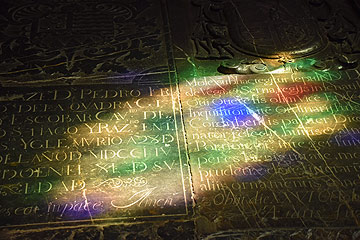

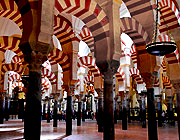
The spectacular Mezquita alone is worth a visit to Cordoba, but the city itself, especially Juderia, is also well worth strolling around.
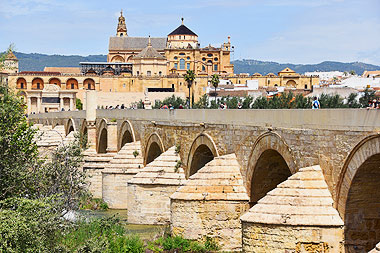
Cordoba sits alongside the Guadalquivir river, there has been a settlement here since the Bronze Age, almost 3,000 years ago. The city, however, was founded in the second century BC as a staging post for the Roman armies. When Augustus made it a regional capital in 23 BC it began to prosper.
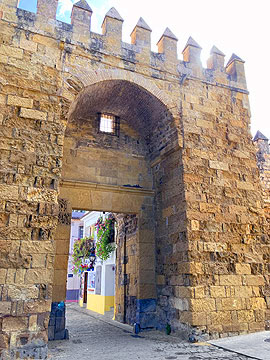
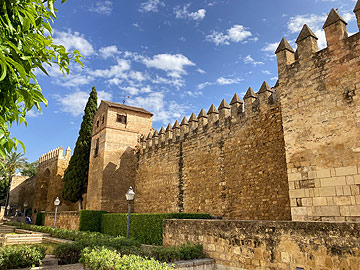
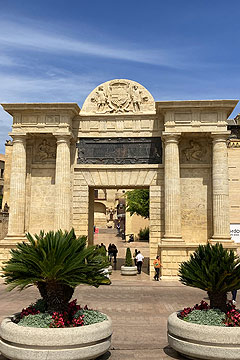
By the 3rd century AD it was in decline and in the 8th century, by which time the Visigoths were in control, it fell to the Umayyad Muslims who took over the whole Iberian peninsula (apart from a small area in the Asturian mountains) in only a few years. The conquered territory was given the name el-Andalus and the modern name of the heartland of the Muslim lands is derived from this - Andalucia.
Cordoba eventually became the greatest of the Islamic cities in the peninsula.
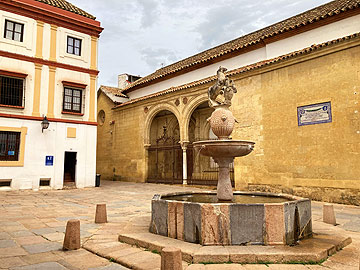
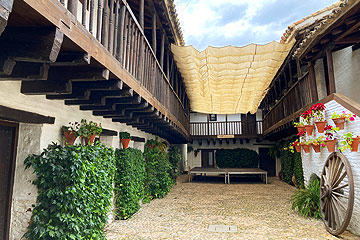
Initially an emirate, the caliphate was established in 929 when Abd ar Rahman III declared himself caliph (the title of those who succeeded Mohammed as political and religious leader) but the caliphate lasted less than a century, and Umayyad rule collapsed in 1031 when Berbers attacked the city.
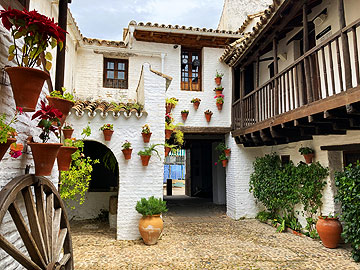
Fernando III, Kind of Castile and Leon, retook the city in 1236 but it never regained its former influence or prosperity.
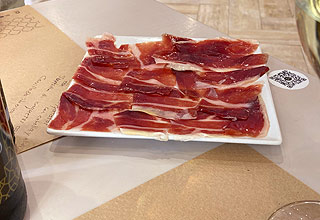
We had a very good lunch at Bodegas Mezquita Ribera. Cold Bedito Momento beers while we chose a selection of tapas: excellent jamon de cebo de campo Iberico, oxtail, boletus and ham croquettes - we both thought the oxtail the best, tortilla de patatas and carrillada Iberica en salsa de vino oloroso - pig's cheek in an "odorous" wine sauce with a few chips, which was also excellent.

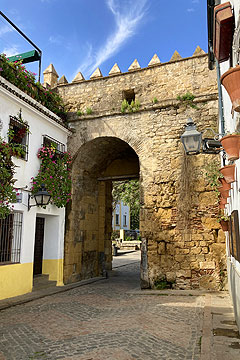
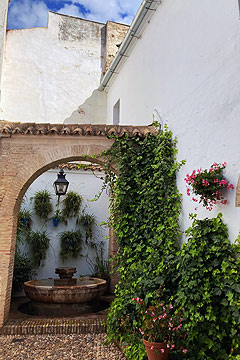
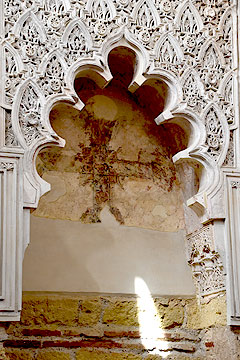
Passing through the old Puerta de Almodovar you quickly come to the Juderia, the old Jewish quarter of Cordoba. It is a peaceful area of quiet flower-filled courtyards, whitewashed buildings and narrow cobbled alleys.
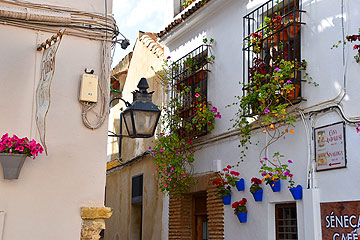
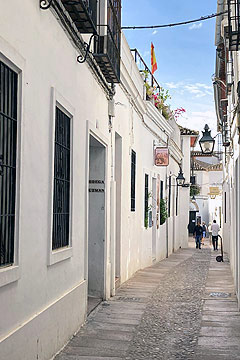
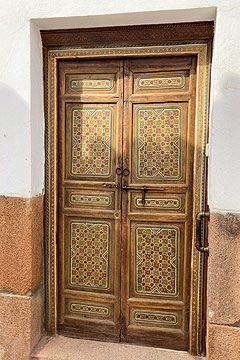
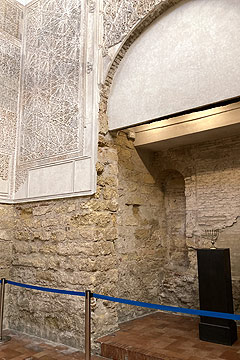
Jews had lived in Spain for centuries, but this did not protect them from a series of pogroms against those of the Jewish faith in the 14th century. Beginning in Seville in 1391 these quickly spread to the rest of Spain.
The Spanish army finally defeated the Muslims in Granada early in 1492 and Christian rule was restored throughout Spain. Later that year the Jews were expelled from Spain on the orders of King Ferdinand II of Aragon and Queen Isabella of Castile, unless they renounced their faith. Many Jews chose to die rather than leave or convert to Christianity.
The small Synagoga in Juderia was constructed in 1315, probably as a private synagogue. It hasn't been used as a place of worship since 1492.
The main hall is light and airy thanks to the high domed roof and windows below the roof line. It is decorated with beautiful Mudejar designs in intricately carved stucco.
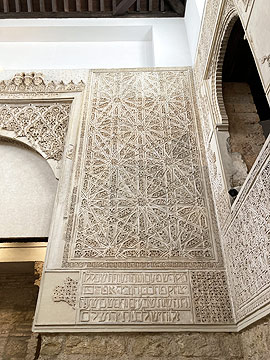
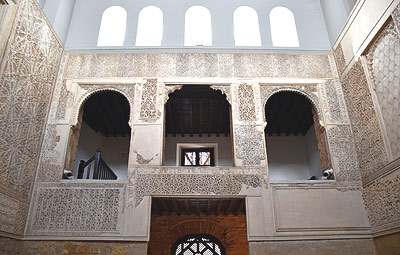
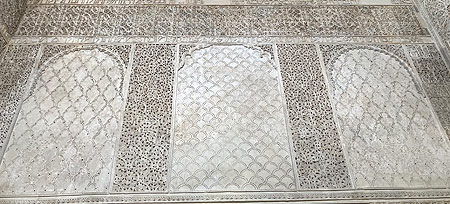
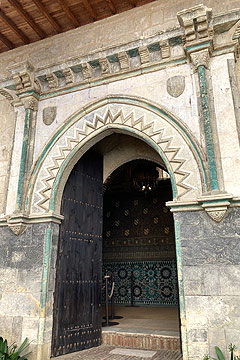
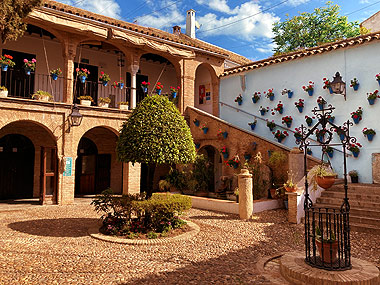
The San Bartolome chapel is also in Juderia, built some time towards the end of the 14th, beginning of the 15th century after the Jews were already threatened. It is exquisitely decorated in Mudejar style with very fine ceramic tiling.
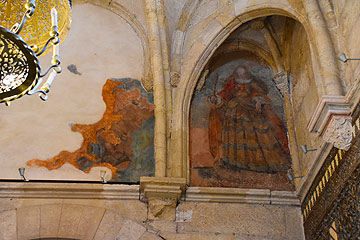
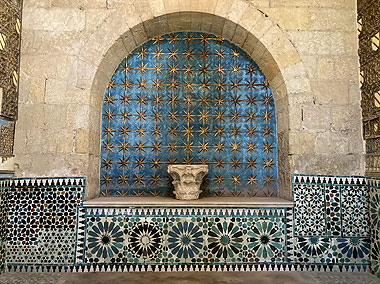
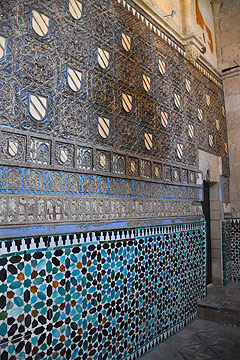
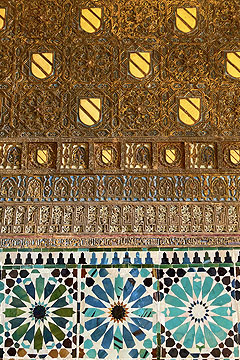
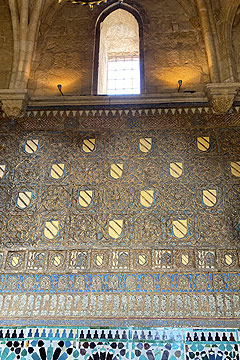
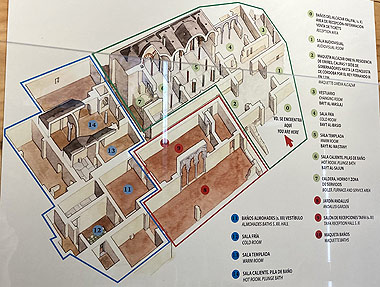
These were the baths of the Caliph's palace, the Alcazar, and were constructed some time in the reign of al-Hakam II, between 961 and 976 AD. They became the model for all baths constructed in medieval Spain. The baths were much altered in the 12th and 13th centuries.
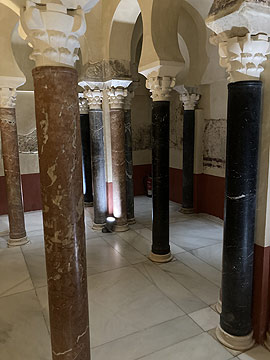
Though the rooms are intact it isn't very evocative of a baths complex.
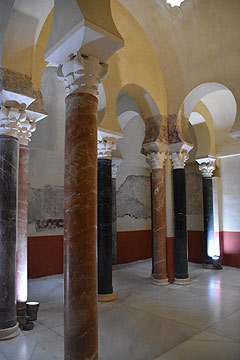
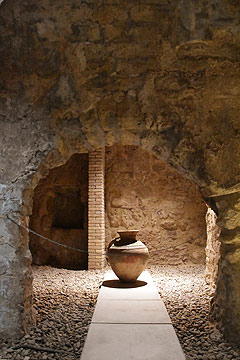
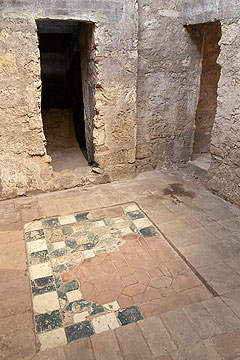
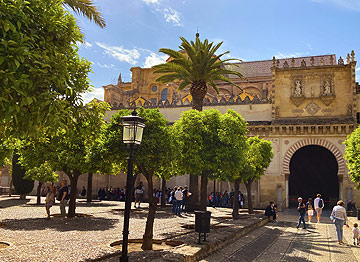
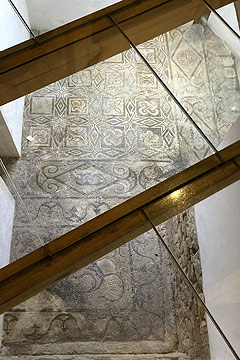
The famous Mezquita (mosque) was begun in the eighth century and expanded in the following centuries until it became one of the largest and most magnificent mosques of the time. It stands on the site of a Roman temple and a later Visigothic church dedicated to St Vincent.
Abd ar-Rahman I purchased half of the church to provide a place for the Muslim community to worship then in 784 bought the rest of the building so that the site could be used to build his new mosque.
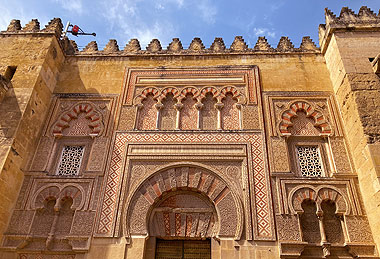
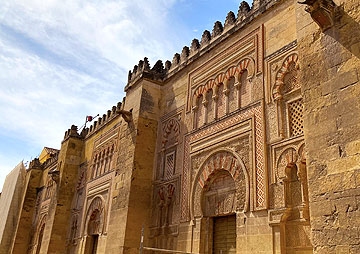
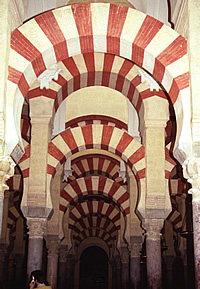
The interior is nothing short of stunning. The spectacular hypostyle prayer hall is filled with columns connected by stacked arches in alternating terracotta brick and white stone.
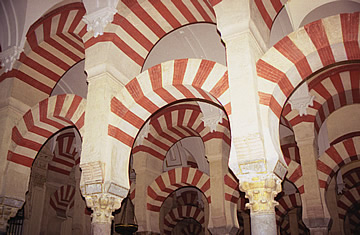
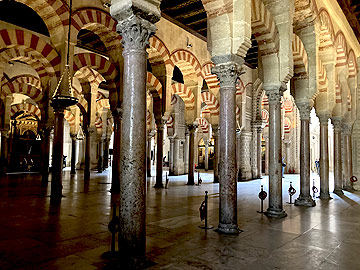
The upper arches support the roof and are semi-circular, of Roman origin. The lower arches are horseshoe-shaped and are of visigothic origin, these act as structural "ties".1,2 Some of the columns were here originally, others were gifts from the provinces.
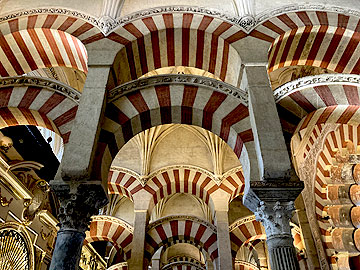
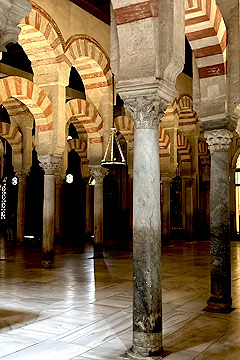
The prayer hall is vast with 856 columns made from coloured marbles, jasper, onyx, granite, and porphyry - this last particularly prized by the Romans as its colour, purple, was regarded as the imperial colour.
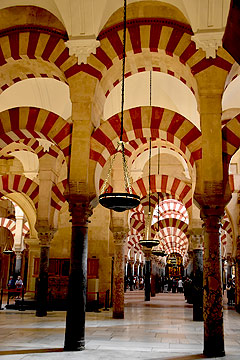
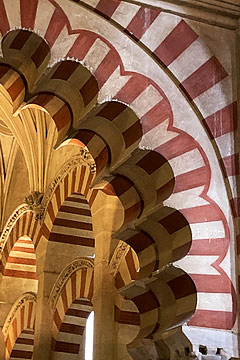
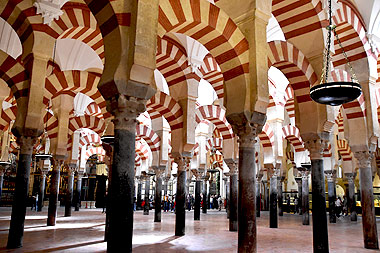
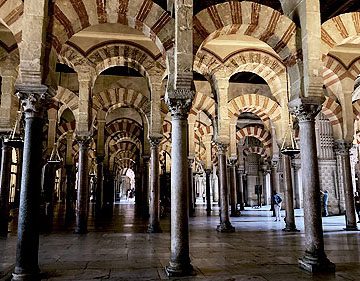
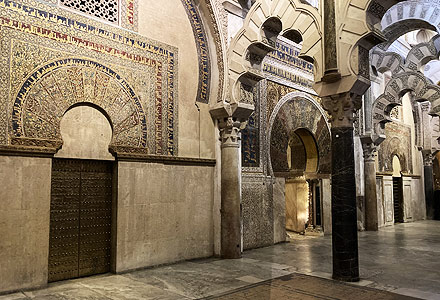
The mihrab, the prayer niche that faces Mecca in all mosques, is fabulously ornate, created in the 10th century during the caliphate of al-Hakam II. The mihrab is flanked by doors to the treasury and a Sabat which once led to a secret corridor to the caliph's palace. All three entrances are decorated with fabulous mosaic work by the expert craftsmen of Byzantium. The glass tesserae from which the mosaics are created also came from Byzantium, most likely a gift from the Emperor.3
The maqsura in front of the mihrab was a (usually closed-off) area reserved for the caliph. Here it is defined by intricate interlocking arches.
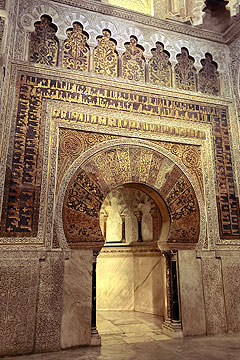
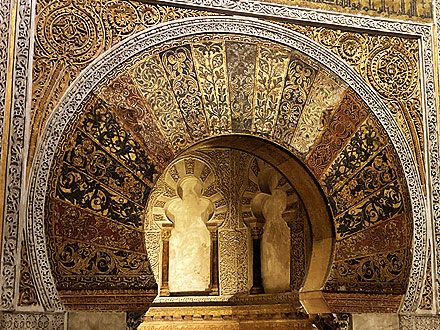
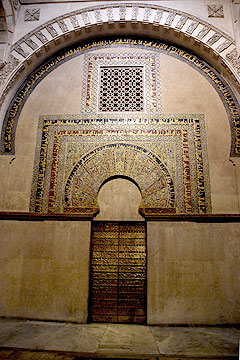
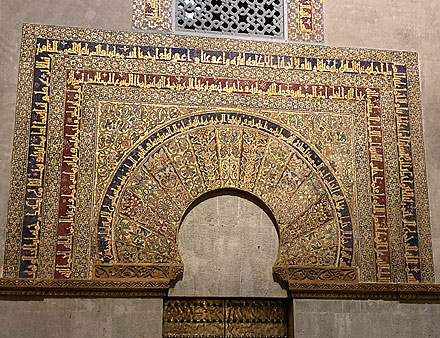
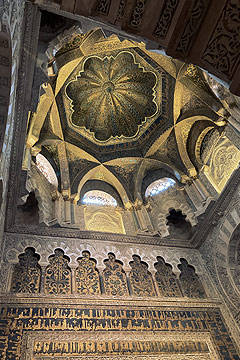
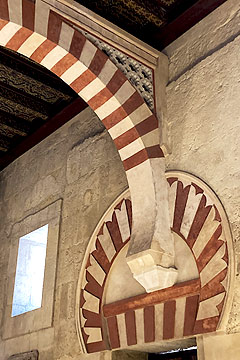
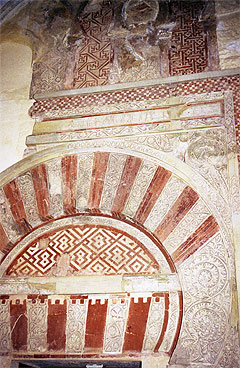
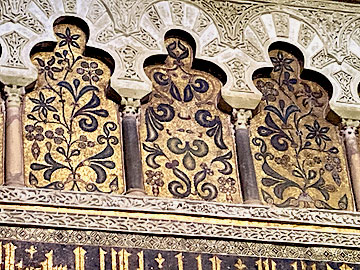
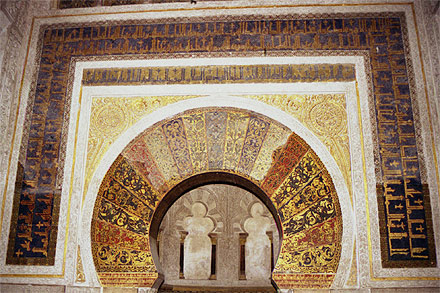
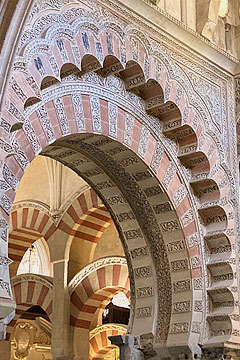
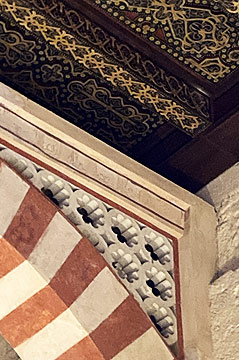
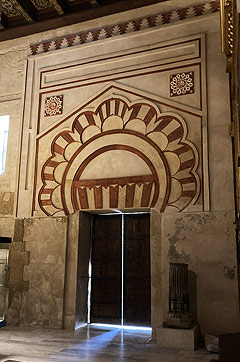
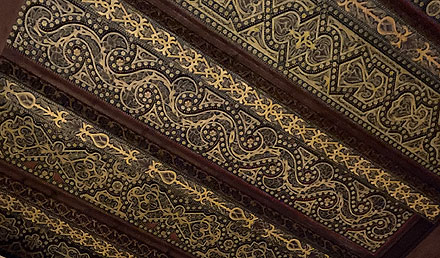
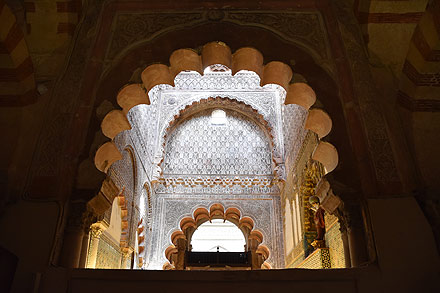
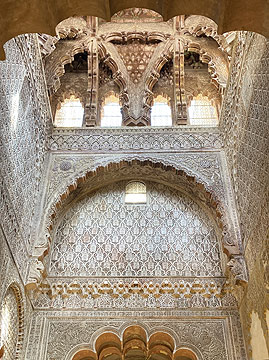
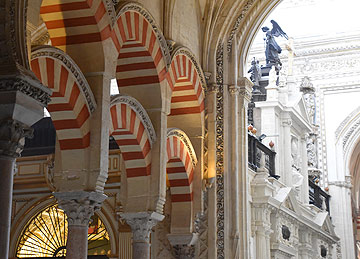
Following the Christian takeover of the city in 1236 the mosque was converted to a cathedral. Both the Capilla Real and Capilla Villaviciosa are spaces which were mostly created in the Muslim era but modified, especially in the case of Villaviciosa, in the Christian era.
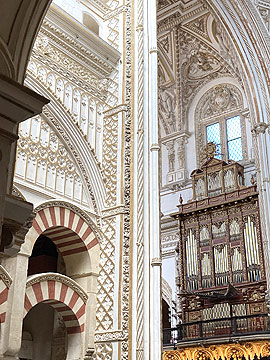
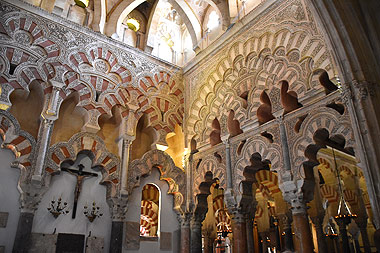
In the 16th century King Carlos I gave permission for a new Capilla Mayor and choir to be built in the centre of the mosque. Legend has it that when he saw the completed work he was horrified - a sentiment I can identify with! How marvellous it would look if it was still intact as the Mezquita.
